The Sony a7R IV is a 61 megapixel beast of a camera that was announced in July 2019. The Sony a9 on the other-hand features a 24 megapixel stacked CMOS sensor and was announced back in April 2017.
With the launch of the new Sony a9II the a9 gets a nice price cut which brings it to around the same price of the Sony a7R IV.
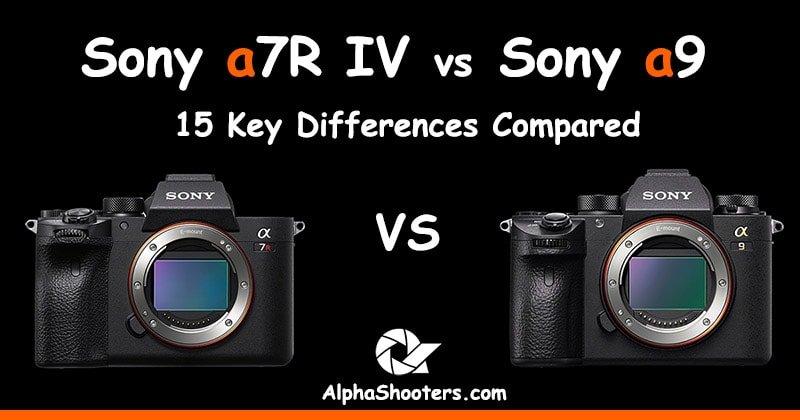
Of course megapixels aren’t everything so in this article I’ll be looking much closer at the key differences between these two cameras and hopefully helping you to decide which is the best camera for your needs.
Since I’m fortunate to own both of these cameras I have a very good idea about how they stack up against each other. I picked up the a9 as soon as it was released in 2017 and the a7R IV was added to my gear bag in October 2019.
Table of Contents[Hide][Show]
- 1. Sensor and Processor
- 2. Image Quality
- 4. Low Light Performance (ISO Sensitivity)
- 5. In-body Stabilization (IBIS)
- 6. Shutter Speed, Continuous Shooting and Buffer
- 7. EVF and LCD Screen
- 8. Dual UHS-II Memory Card Slots
- 9. Video
- 10. Body Design
- 11. Menu System
- 12. Pixel Shift
- 13. Wi-Fi and Tethering
- 14. Additional Differences
- 15. Price (Body-Only)
- Similar Features
- Which One to Buy?
1. Sensor and Processor
The a7R IV features a jaw breaking 62.1 megapixel BSI (backside illuminated) Exmor R CMOS sensor with no anti-aliasing (low pass) filter to maximize image details.
The a9 on the other-hand features a 24.2 megapixel backside-illuminated Exmor RS sensor with integral memory, this memory allows the a9 to analyze a subject for correct focus and exposure at 60X a second. The a9 does however include an anti-aliasing filter.

This stacked sensor design helps the a9 to achieve much faster continuous shooting speeds of 20fps vs 10fps, a faster shutter speed of 1/32000 vs 1/8000, as well as minimizing the rolling shutter effect and banding from artificial lighting.
Here’s a video from Sony to demonstrate the capabilities of the a9’s image sensor:
If you switch the a7R IV into APS-C mode then you’ll now get 26.2MP which is higher than the 24.2MP found in the Sony a6400. This can be very useful for bird photography when you might want to crop in tightly on smaller birds. Shooting the a9 in APS-C mode brings the megapixels down to 10MP.
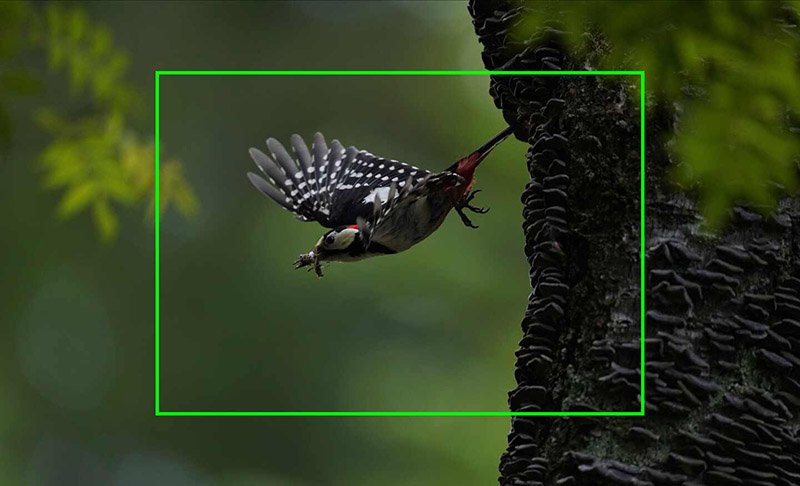
Both cameras support 14-bit RAW with compressed and uncompressed options. Both cameras also support the conventional aspect ratios of 3:2, 16:9 and 1:1, the a7R IV also adds 4:3.
2. Image Quality
The a7R IV with its 61MP sensor and no anti-aliasing (low pass) filter definitely has the advantage over the 24.MP sensor of the a9 when it comes to image quality.
However, compare two images sized the same and you are unlikely to notice much if any difference between the two cameras, it’s only really when you start to crop in and reveal the benefits of the larger sensor that you’ll notice the difference.
I’ll be adding some image comparisons here very soon.
3. Autofocus
The a7R IV features 567 phase detection points that cover approximately 74% of the sensor’s surface, the a9 features 693 phase-detection AF points that cover approximately 93% of image area. Both cameras have 425 contrast detection points in addition to the phase detection points.
Phase detection can be used on the a7R IV up to f/11, this also means that you can still shoot continuously at f/11 and the camera will adjust the focus and exposure for every single shot in a burst of images. When you go above f/11 only the first shot of the burst will be in focus. With the a9 phase detection works up to f/16.
Both cameras support Real-time Eye AF for both humans ad animals but only the Sony a7R IV supports Eye AF when shooting movies.
A few members of the photography press who had a brief hands-on with the a7R IV at the first media event described the autofocus speed as similar to the a9, unfortunately this simply isn’t true.
In the following video I compare the autofocus speed of a7R IV vs a9 for shooting birds in flight. I think it’s pretty clear form the video that the a9 locks on to the subject approximately 2-3x faster than the a7R IV.
Here are some of the sample images from the video. The images are cropped to my liking but no other post processing has been carried out. The lighting conditions were very mixed when I took these photos and I had better luck when I was shooting with the a9, sadly this is often the case in the UK. I be creating a sample image gallery for both the a9 and a7R IV soon and adding further images, hopefully in better light!
Sony a7R IV Sample Images

Sony a7R IV + 200-600 @ 600mm | 1/2000 | f/6.3 | ISO 1000 | Cropped | Full Resolution SOOC Download: JPEG | RAW **
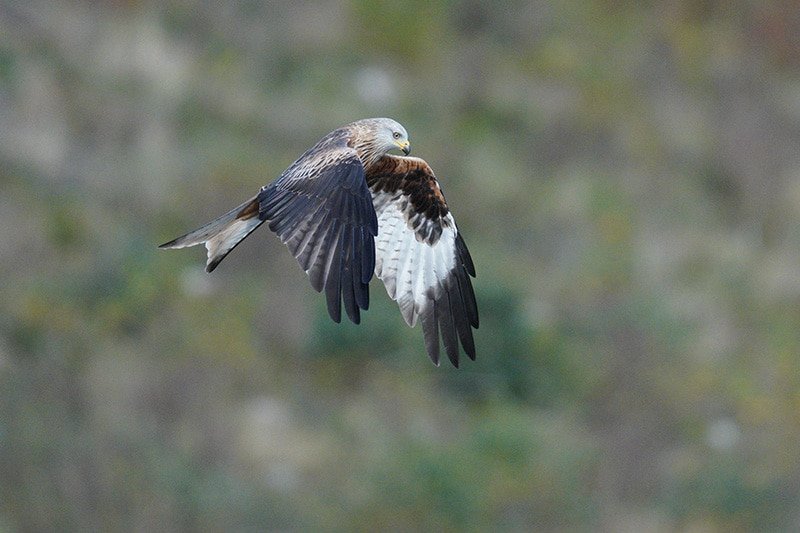
Sony a7R IV + 200-600 @ 600mm | 1/2000 | f/6.3 | ISO 2000 | Cropped | Full Resolution SOOC Download: JPEG | RAW **
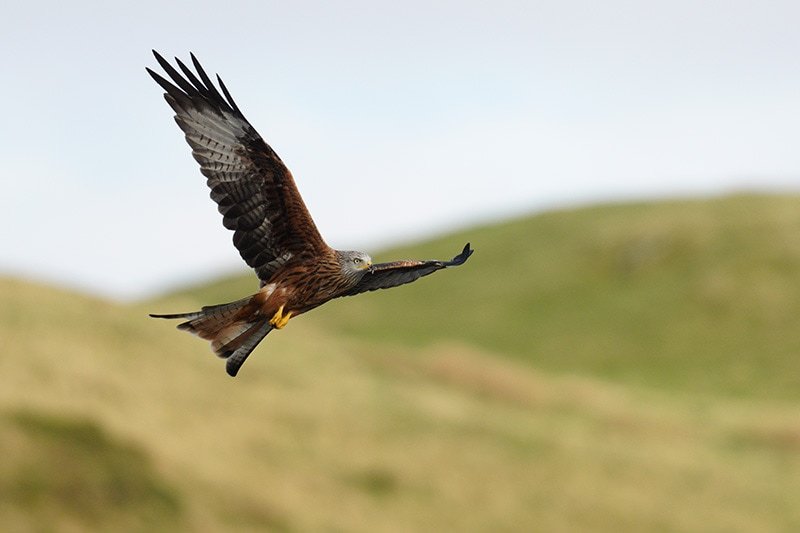
Sony a7R IV + 200-600 @ 600mm | 1/2000 | f/6.3 | ISO 1000 | Cropped | Full Resolution SOOC Download: JPEG | RAW **
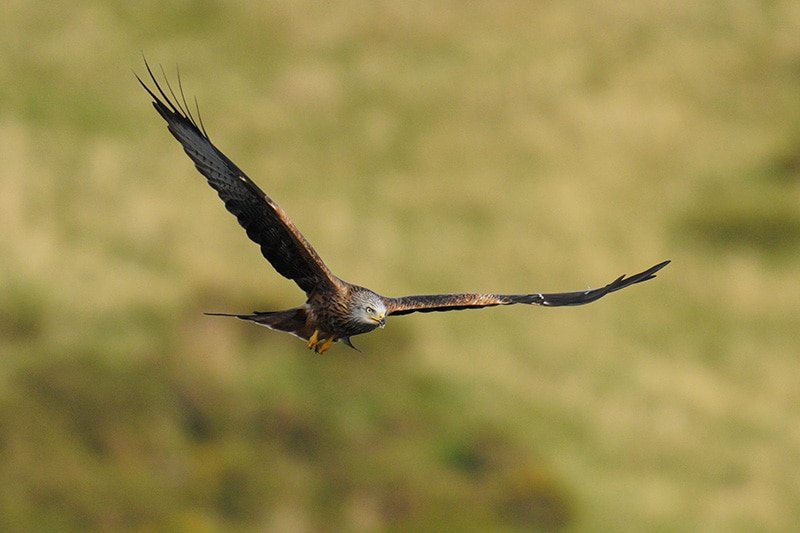
Sony a7R IV + 200-600 @ 600mm | 1/2000 | f/6.3 | ISO 1250 | Cropped | Full Resolution SOOC Download: JPEG | RAW **
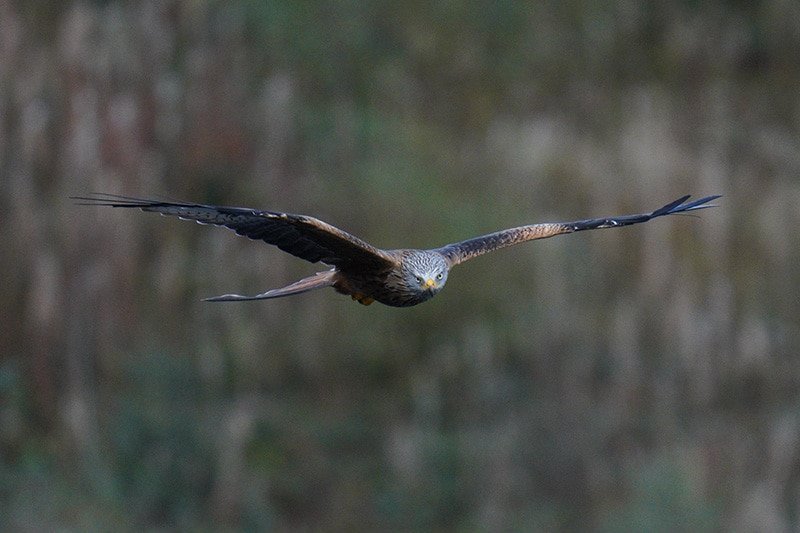
Sony a7R IV + 200-600 @ 600mm | 1/2000 | f/6.3 | ISO 2000 | Cropped | Full Resolution SOOC Download: JPEG | RAW **
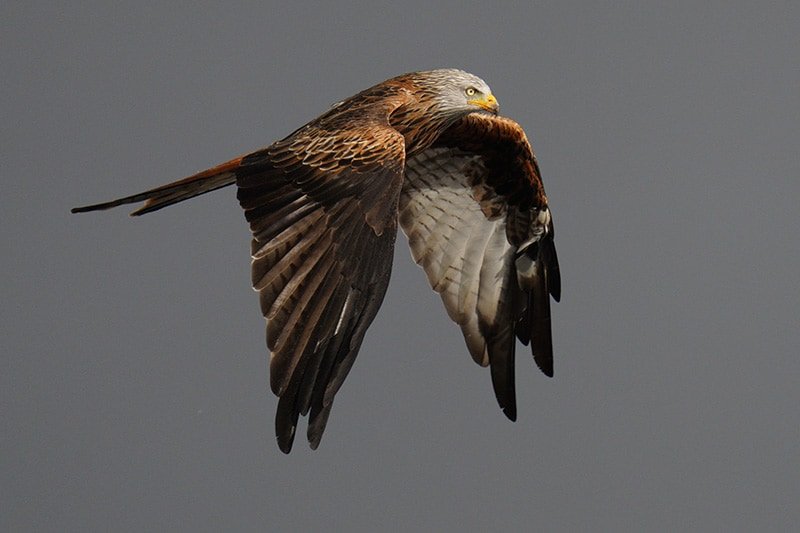
Sony a7R IV + 200-600 @ 600mm | 1/2000 | f/6.3 | ISO 400 | Cropped | Full Resolution SOOC Download: JPEG | RAW **
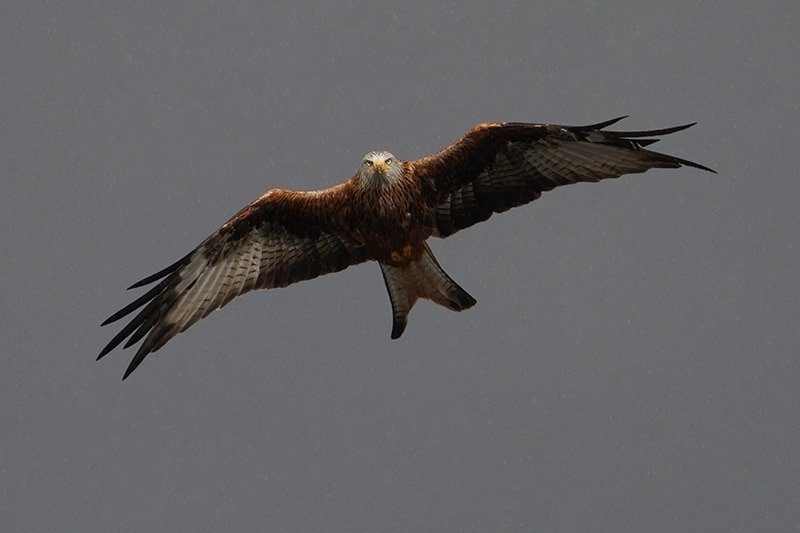
Sony a7R IV + 200-600 @ 600mm | 1/2000 | f/6.3 | ISO 400 | Cropped | Full Resolution SOOC Download: JPEG | RAW **
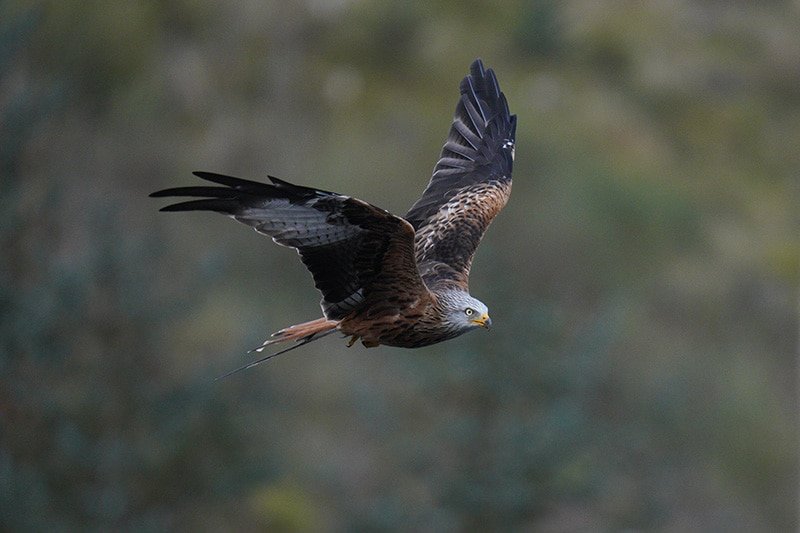
Sony a7R IV + 200-600 @ 600mm | 1/2000 | f/6.3 | ISO 2500 | Cropped | Full Resolution SOOC Download: JPEG | RAW **
Sony a9 Sample Images
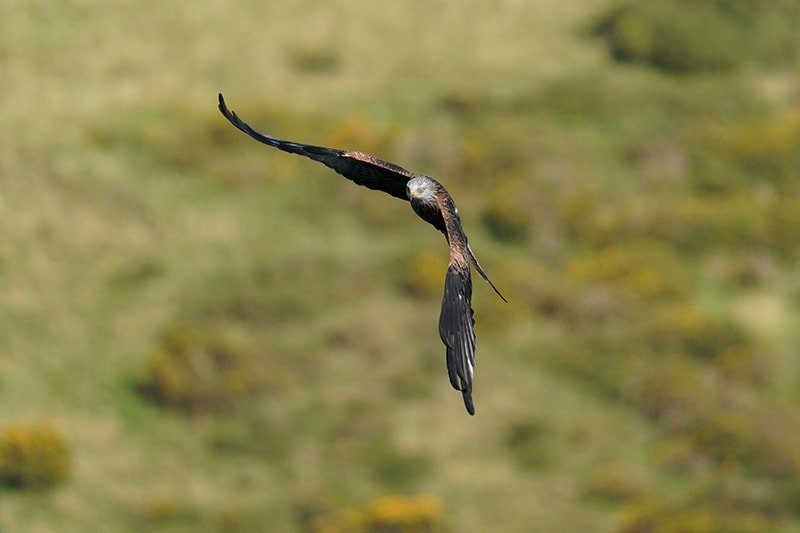
Sony a9 + 200-600 @ 535mm | 1/2000 | f/6.3 | ISO 800 | Cropped | Full Resolution SOOC Download: JPEG | RAW **
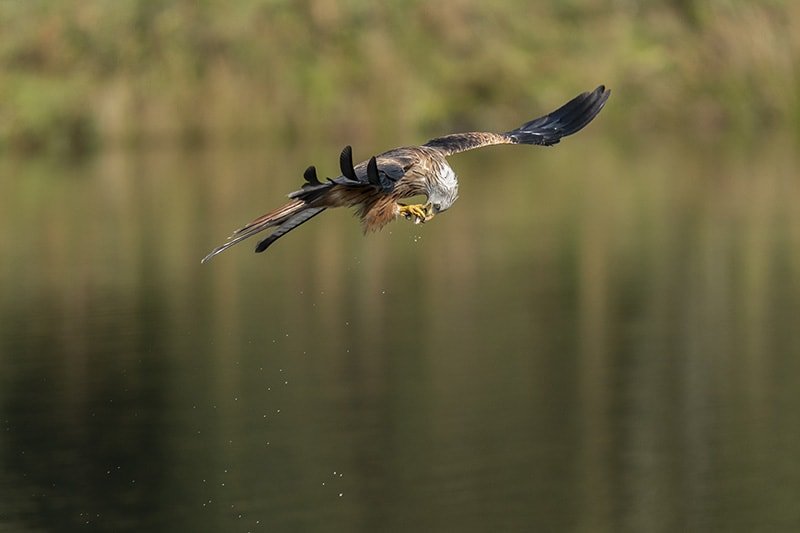
Sony a9 + 200-600 @ 485mm | 1/2000 | f/6.3 | ISO 1250 | Cropped | Full Resolution SOOC Download: JPEG | RAW **
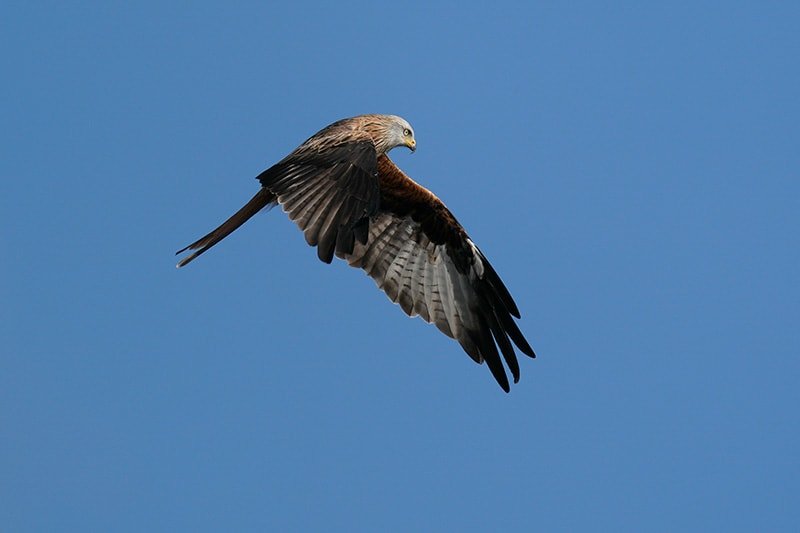
Sony a9 + 200-600 @ 600mm | 1/2000 | f/6.3 | ISO 250 | Cropped | Full Resolution SOOC Download: JPEG | RAW **
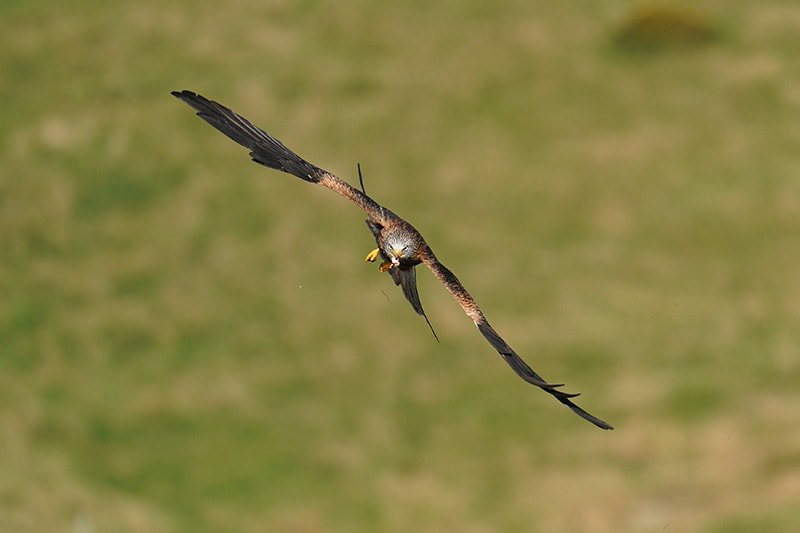
Sony a9 + 200-600 @ 485mm | 1/2000 | f/6.3 | ISO 500 | Cropped | Full Resolution SOOC Download: JPEG | RAW **
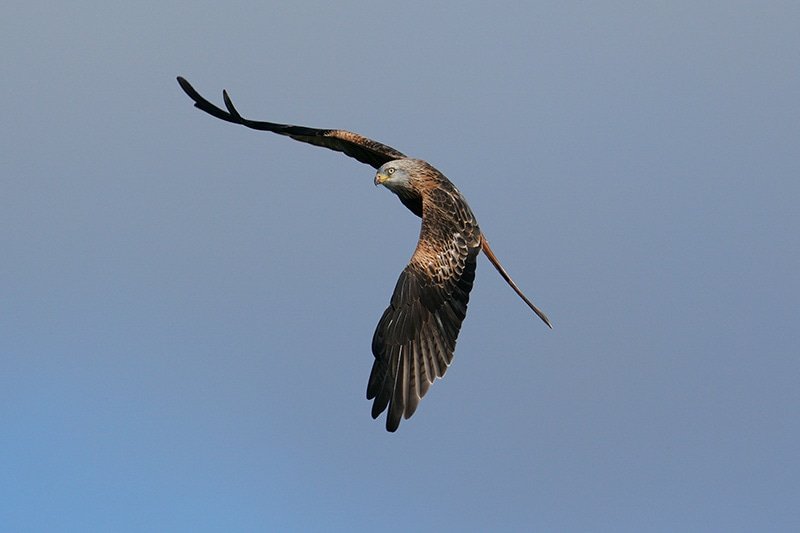
Sony a9 + 200-600 @ 485mm | 1/2000 | f/6.3 | ISO 400 | Cropped | Full Resolution SOOC Download: JPEG | RAW **
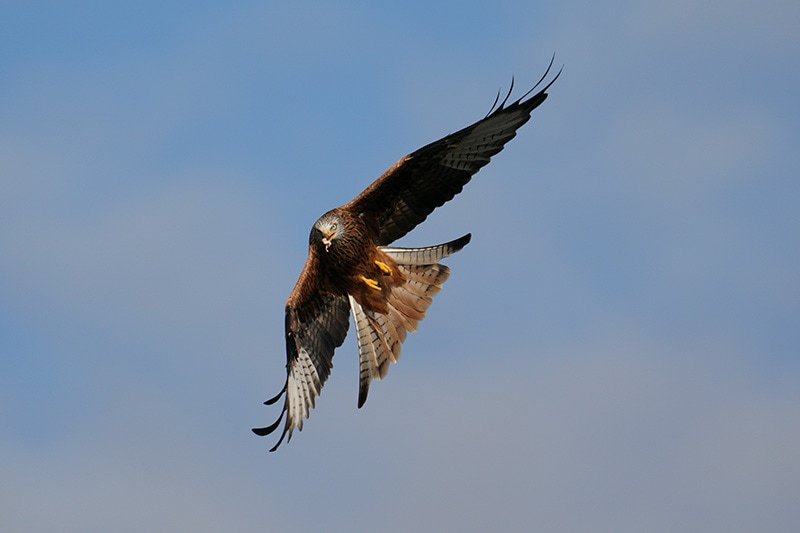
Sony a9 + 200-600 @ 485mm | 1/2000 | f/6.3 | ISO 320 | Cropped | Full Resolution SOOC Download: JPEG | RAW **
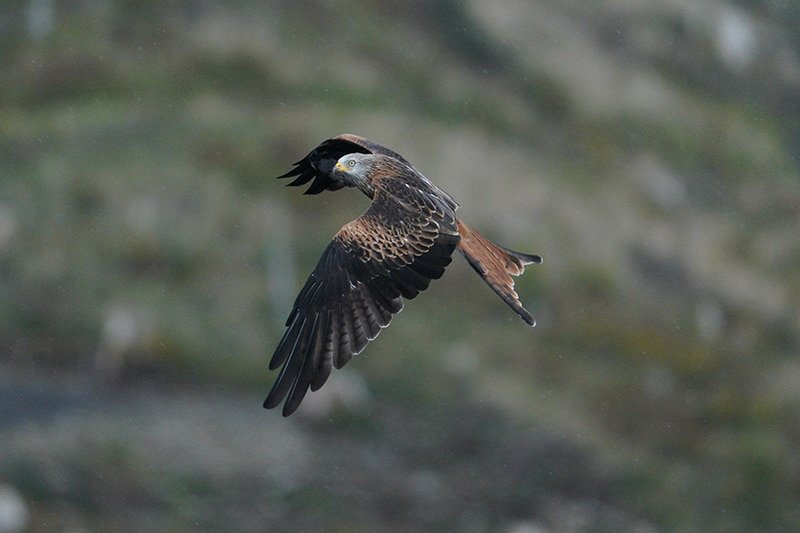
Sony a9 + 200-600 @ 485mm | 1/2000 | f/6.3 | ISO 3200 | Cropped | Full Resolution SOOC Download: JPEG | RAW **

Sony a9 + 200-600 @ 485mm | 1/2000 | f/6.3 | ISO 3200 | Cropped | Full Resolution SOOC Download: JPEG | RAW **
When it comes to keepers both cameras are very capable but the a9 is more consistent. I’ve shot bursts of 10 images (red kite flying straight at me) with the a7R IV and I would class all 10 as keepers (6 critically sharp, 4 slightly soft). However, other times I’ve shot a burst of 10 images and 2-3 have been out of focus. This rarely happens with the a9, you can shoot burst after burst without missing focus, it will happen now and again but it’s a lot more consistent than the a7R IV. The a9 will also net you a higher number of critically sharp images.
It’s important to note that your keeper rate will vary depending on the subject that you are shooting, the light conditions at the time and the lens that you are using. But overall the a9 will always be the more consistent camera and net you a higher number of keepers and critically sharp photos.
4. Low Light Performance (ISO Sensitivity)
The a7R IV has an ISO sensitivity range with native values from 100 to 32000 and extended from 50 to 102400. The a9 extends the native range to 100-51200 and an expanded range of 50-204800.
Both cameras feature Focus Priority in Aperture Drive which helps to achieve more accurate focusing in dim lighting when the aperture is stopped down (only when using the electronic shutter).
I’ll be adding some ISO comparison shots here very soon. Until then the camera comparison tool over at DPReview is very helpful for comparing images between both cameras at various ISO levels.
5. In-body Stabilization (IBIS)
Although both cameras feature in-body 5-axis image stabilization, the a7R IV features a refined image stabilization algorithm and redesigned mechanism to achieve up to a 5.5 stop shutter speed advantage vs the 5 stop advantage with the Sony a9.
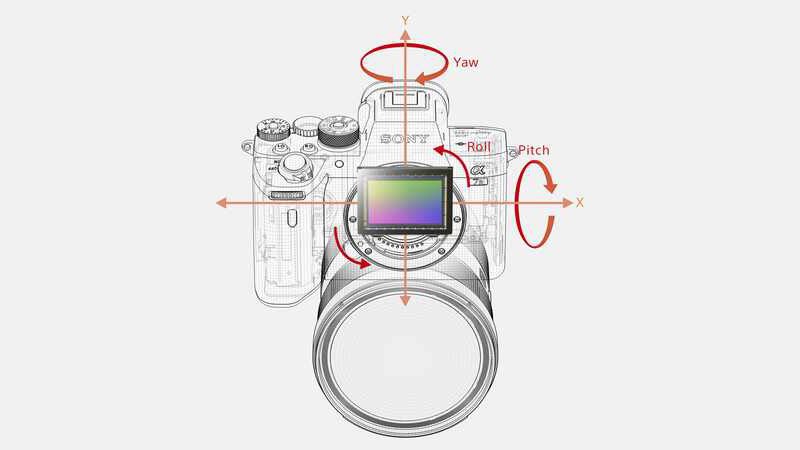
6. Shutter Speed, Continuous Shooting and Buffer
With the a7R IV the maximum shutter speed for both the mechanical and electronic shutter is 1/8000 second.
The a9 can shoot at up to 1/32000 second when using the electronic shutter but the mechanical shutter speed remains at 1/8000 second.
So if you want to shoot images and fast aperture like f/1.8 in bright sunshine then the faster electronic shutter of the a9 will allow you to do this without reaching for an ND filter.
The a7R IV can shoot up to a maximum of 10 frames per second with the mechanical shutter and 8 FPS with the electronic shutter.
The a9 is able to shoot at 20fps using the electronic shutter and with zero blackouts, but switch to the mechanical shutter and you are limited to 5fps

If you are shooting continuously then the buffer on the Sony a7R IV supports a maximum of 68 JPEG, 68 compressed RAW, or 30 uncompressed RAW images. If you switch the a7R IV into APS-C mode and you’ll now get approximately 3x this number. The a9 can record up to 368 JPEG and 245 compressed RAW files in a continuous burst.
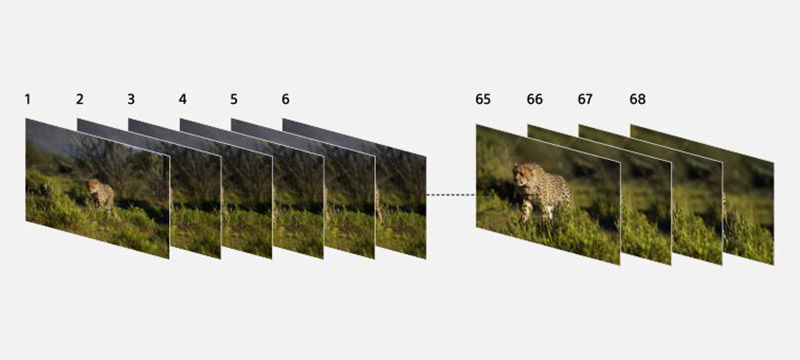
7. EVF and LCD Screen
The a7R IV boasts a massive 5.76-million-dot electronic viewfinder that reproduces fine detail with approximately 1.6 times higher resolution than the Sony a9. The frame rate remains the same for both cameras at 120/100fps.
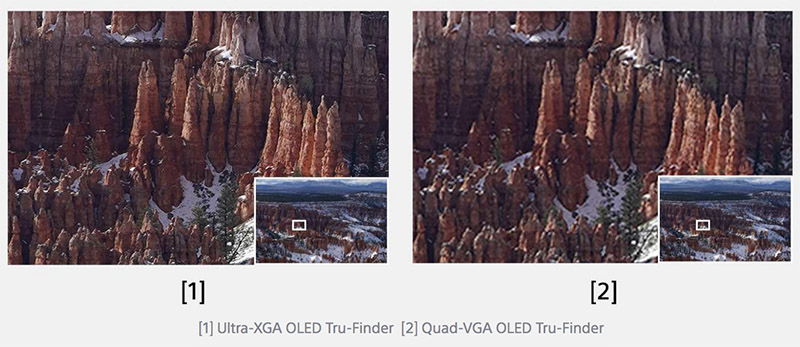
The rear LCD screens of both cameras remain the same with 1,440k dots, 0.78x magnification and touch controls for selecting and moving your focus point and zooming in. You can also adjust both LCD screens by approximately 107 degrees up and 41 degrees down.
8. Dual UHS-II Memory Card Slots
Although the a9 features two memory card slots, only one supports the faster UHS-II memory cards. Thankfully Sony have come to their senses and now both slots in the a7R IV are compatible with UHS-I and UHS-II memory cards.
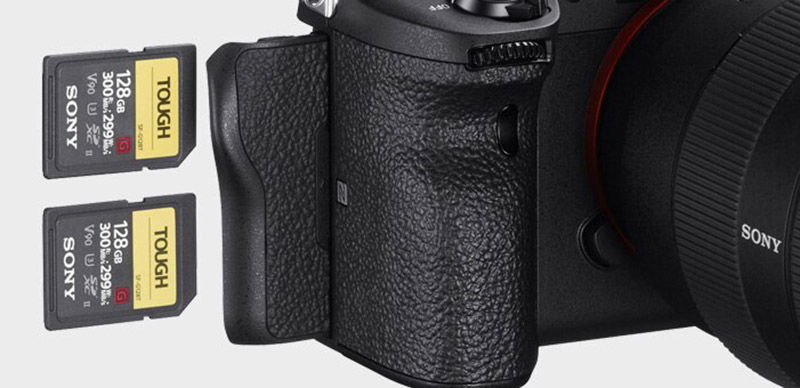
With the a7R IV there is also an increased number of camera settings that can be stored on the memory card, and saved settings can be read by other cameras of the same model. Up to 10 sets of camera settings can be stored to a memory card by using the Save/Load Setting function. Camera setups can also be imported to the Imaging Edge Mobile application.
9. Video
Both the a7R IV and the a9 can record 4K video at up to 30fps and 100Mbps using XAVC S compression. In 1080p both cameras can record up to 120fps.
When shooting video with the a9 at 24p/25p there is zero sensor crop, this is achieved by capturing 6K then downsampling to 4k. At 30p recording is captured at roughly 5k, so there is a slight crop of 1.2x crop but this helps to reduce rolling shutter effect.
The a7R IV does bin pixels when shooting in full-frame mode because of its 61MP sensor. If you shoot in APS-C mode there’s no pixel binning, less aliasing and less noise at higher ISOs.
Here’s a 4k movie shot on the a7R IV:
Unfortunately Sony decided to omit picture profiles from the a9, including S-Log2 and 3, and ITU 709. The a7R IV does support in-camera picture profiles that include: S-Log2, S-Log3 and a HLG (Hybrid Log-Gamma) profile for output to HDR TV’s without the need for color grading. Both cameras support Slow and Quick Motion (S&Q). This allows you to select between 1fps and 120fps for slow or fast motion clips.
The a7R IV also gets Eye AF for videos along with no recording limit. The a9 is limited to 29:59 when recording will stop and you’ll need to hit the record button again.
The a7R IV features a new Multi Interface Shoe with a built-in digital audio interface that allows direct connection of the new digital ECM-B1M Shotgun Microphone for clear, low-noise audio recording. Although the a9 does have the Multi Interface Shoe it does not include the built-in digital audio interface.

10. Body Design
The a9 has never been the most comfortable camera to hold, thankfully Sony have been listening to their customers and the a7R IV features a larger grip that also provides more room for your fingers between the grip and larger lenses.

Not content with only changing the grip Sony has also redesigned and increased the size of the multi-selector (AF Joystick) along with a new textured surface to improve the grip. Response in all eight directions has also been improved. The AF-ON button has been enlarged making it much easier to use with gloves on.

The exposure dial now features a lock release button that can be set to on for fast changes or off to prevent accidental, unwanted changes. The rear dial has also been re-designed and re-positioned and the shutter button now sits at an angle. The a9 features an additional dial on the top left of the body that allows you to select the drive and focus modes.

The a7R IV gets improved moisture resistance with refinements throughout the body. Additional sealing is provided at all body seams as well as the battery compartment cover, and the media slot now has a double sliding cover rather than the previous hinged cover to keep water out. A redesigned lens lock button and additional cushioning around the mount contribute further to reliability in challenging outdoor conditions.
Here’s a look at the dimensions and weights (with battery and SD cards) between the two cameras:
a7R IV: 126.9mm (w) x 95.6mm (h) x 63.0mm (d) – 665g
a9: 126.9mm (w) x 95.6mm (h) x 73.7mm (d) – 588g
If you feel that either body is a little too small for your hands then you do have the option of adding a battery grip. The a9 supports the Sony VG-C3EM grip and the a7R IV supports the VG-C4EM grip.
11. Menu System
Neither camera has the most intuitive of menu systems, thankfully there have been some improvements with the a7R IV over the a9.
The a7R IV adds separate Fn button functions that can be assigned for still and movie modes and illustrated custom menu items make it far easier to identify the functions assigned to each control.

Both cameras feature My Menu and My Dial that allow you to assign frequently used functions to a custom menu and the front/rear dials and the control wheel.
12. Pixel Shift
The Sony a7R IV is the only camera of the two that features Sony’s Pixel Shift technology. This feature shifts the sensor in half or one pixel increments in a programmed order to capture 16 pixel-shifted images, composited into one high-precision image of approx. 240.8MP using Sony’s Imaging Edge desktop software.
Here’s a video from Sony demonstrating Pixel Shift in the a7R IV:
The main advantage of Pixel Shift is increased color accuracy and sharpness, but only if your subject is perfectly still and your camera is on a very solid tripod, as the slightest movement will render the images useless. Product photography, architecture photography, and still macro photography are areas where Pixel Shift will really shine. Landscape photography not so much since there are most likely to be moving elements like clouds, flowing water, or the wind blowing things around etc.
13. Wi-Fi and Tethering
Both cameras are wireless enabled but the a7R IV supports both 2.4 GHz or 5 GHz Wi-Fi, whereas the a9 only supports 2.4 Ghz. The a9 does however include a LAN terminal allowing you to connect an ethernet cable for the fast transfer of files.
Tethering is available for both cameras when using Imaging Edge and Capture One. The a7R4 packs a faster USB Type C 3.2 port compared with the USB 2.0 spec on the a9
Both cameras support FTP and background transfer that allows convenient Wi-Fi transfer of still image files to a specified remote FTP server. FTPS (File Transfer Protocol over SSL/TLS) is supported, allowing SSL or TLS data encryption for maximum security.
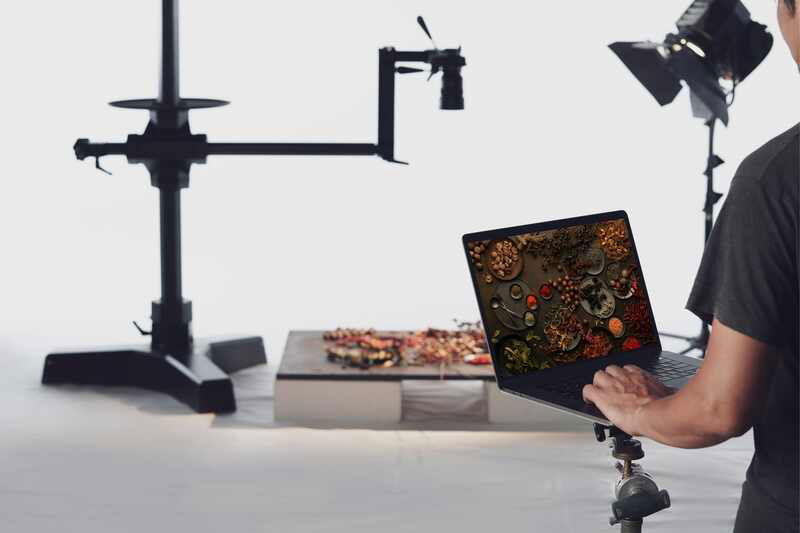
With the a7R IV you can also transfer files from an SD card in the camera via Wi-Fi even if the camera power is OFF. Images to be transferred are selected via the Imaging Edge Mobile application installed on a mobile device. Movie files can also be transferred in this way.
14. Additional Differences
Additional differences will be added here as I learn about them.
15. Price (Body-Only)
Please note that prices vary between retailers and there are often special deals running throughout the year. These prices are therefore guide prices for comparison only, please check the latest prices and deals using my price check links at the end of this article.
Body only prices:
- The a7R IV costs: $3500 / £3500
- The a9 costs: $3500 / £3500
When the a9 was first launched the price was around $4500, with the introduction of the Sony a9II that price has now dropped $1000.
Similar Features
Whilst there are most certainly many differences between these two cameras, there are also many features that they share in common, these include:
- Interval shooting
- Human and Animal Eye AF
- 4K video up to 30p and 100Mbps
- Full HD up to 120 fps
- 1.44M 3.0-in LCD
- NP-FZ100 battery
- Sony RMT-P1BT Remote Commander support
- Real-time Tracking
- Focus Priority Aperture Drive
- Focus Frame Color Selection
- 3.5mm audio in and out
- HDMI micro output
- Flash sync terminal
- Bluetooth 4.1
Which One to Buy?
If you are sports shooter then focus speed is most likely going to be your number one priority and the a9 probably makes the most sense, the smaller 24mp files will also make shooting large bursts a lot easier to manage. Also if you primarily shoot birds in flight then the a9 will net you more keepers than the a7R IV, but the a7R IV is still very capable at shooting birds in flight.
If you shoot a mix of wildlife, portrait and landscapes then the additional resolution of the a7R IV is probably going to benefit you more than the speed of the a9. The cropping power that 61mp offers for wildlife is really invaluable, as we can rarely get as close to our subjects as we would like to.
These cameras also compliment each other very well and if you are fortunate to afford both you’ll have a camera for every situation.


Timothy,
Thank you for sharing your knowledge. I’m a sports Photog and I love the massive pixel count on the A7R4 but for sports, the A9 is my go to.
I would recommend this review to anyone making some difficult choices.
This is invaluable Timothy.
It’s interesting to see where the tracking locks happen with both cameras.
With one of the supertelephoto primes added to my kit the 7R IV is tempting.
The A9 and I hear also the 7R III have trouble with small perched birds with Spot AF. They can fail to lock at all. Mathieu Gasquet puts this down to them operating in CD mode then.
Hi Ziggy. Glad that you found the article helpful. I don’t shoot too many small perched birds but I have heard about people having troubles with locking focus. I do remember one occasion when I was shooting a kingfisher with my a7R III + 100-400. The perch was only about 8 meters or so from my hide but the camera refused to lock on first time, it did lock after locking onto something else then going back to the kingfisher. I have the shots from this day and I know I was shooting wide-open at f/5.6 so still using phase detection on the a7R III and not contrast detection. The light wasn’t the best at the time so I’m not sure if this had an affect or not. I’ve shot a few small birds with my a7R IV along with the kingfisher I posted in the FB wildlife group a few weeks back and so far haven’t encountered this same issue, but I’d certainly want to shoot a lot more small birds before confirming this no longer appears to be an issue with the R4. I’ll try to shoot some small birds this coming week and keep you updated! All the best for 2020! Tim
I have the same prolem with Canon 70d and 400mm f5,6 on kingfisher
Hi Timothy, your efforts and information were especially appreciated and my conclusions are similar to yours. For critical focus and tracking the a9 wins though the a7riv offers the advantages you mentioned. Likewise, with the a7riv I’ll find anywhere between 20-40% of BIF images missing critical focus depending on lighting/subject though that number drops dramatically to less than single digit % on perched birds/animals. I could be mistaken but did you use af-c center tracking for your comparison and if so why? What are your preferred af settings? Lovely images of those birds of prey and you are fortunate to have them nearby.
Hi Adam. Glad that you found the article and video helpful and have drawn similar conclusions to myself. Yes I used AF-C and Tracking Centre and also Tracking Sensitivity 1 (locked on). This is normally my preferred setup for shooting birds in flight. I use the Olympus Dot Sight to help with tracking and recording video at the same time as well, as when you use the HDMI out you lose the EVF and LCD and following birds using my Atomos Ninja Display at 600mm is almost impossible. So with tracking centre so long as I’ve aligned my dot sight I can just point it at a bird and it should lock-on and follow it within the phase detection area. Tracking sensitivity 1 (locked-on) only really makes a difference if another bird flies in front of the one that you are tracking, with 5 it would jump to the other bird. It makes little difference if a subject with higher contrast in the background grabs the focus. The red kits are a couple of hours drive away from me but always worth it!
Great review, Thank you
Cheers Oguz!
Excellent write up! Many of us are torn between these cameras… For me I shoot bird’s but also nature, landscape and automotive photography. I needed a versatile body… There A7RIV seems to be it. The A9 is great but I don’t see it as a good fit for landscape or macro work where extra resolution is needed. I see that you preferred the A7RIV at the end of the video… Were you ever disappointed with the A7RIV tracking for birds or did you find it plenty fast enough? Thanks again
Thanks Nelson. The a7R IV is definitely the more versatile camera between the two. I’ve had both the a7R III and the a9 since they were released any my a7R III has had a lot more use! I’ve not been disappointed with the a7R IV so far but I’ve not had it for very long and there are lots more subjects I’d still like to shoot with it. I’ve not tried it with smaller faster birds yet.
Looking forward to your testing with smaller bird’s in flight. Also, check out Mark Smith photography… He also purchased an A7RIV in addition to his A9 (and Nikon D850/D500 combo) for his bird photography. His shots of Ospreys with the RIV are stunning. In his YouTube videos he also commented on the need for extra resolution. One thing I noticed is he stated in his videos, he shot short bursts, to keep the bird in the frame but also maintain the buffer. I’ve wondered if this is the best way to shoot with the R4? Short 1-2 second Bursts instead of spraying which should also allow an uptick in accuracy while tracking? Mark noted while shooting this way the camera didn’t miss focus on a single shot of 26 images taken wondered if you’d be willing to test this theory? Take care
Mark’s shots are pretty amazing! To be honest I normally shoot in small bursts or 1-2 seconds anyway as with the a7R IV you risk filling up the card pretty fast and culling all of those similar shots isn’t much fun either. I will do another test with my dog running towards the camera where I usually end up shooting 30-40 images in a burst, so I’ll see if that makes any difference. Just need the weather to improve a little first! All the best, Tim